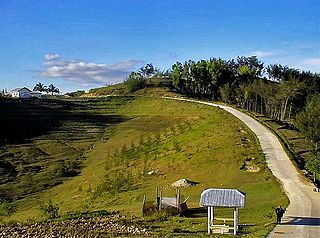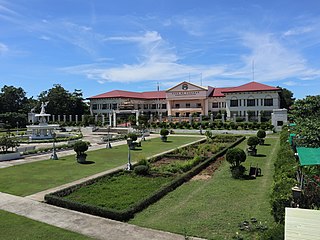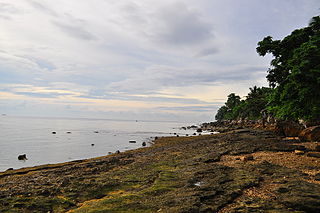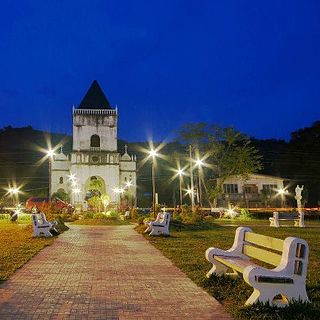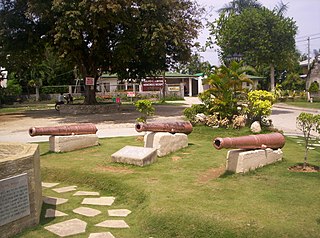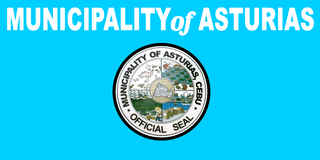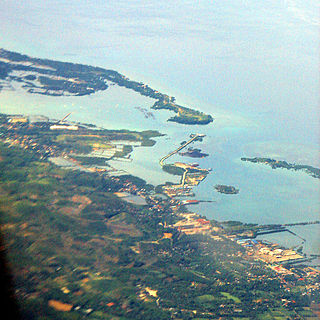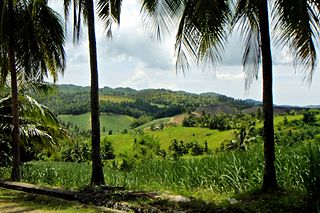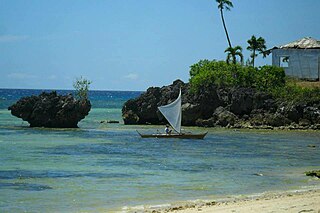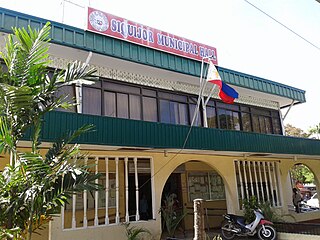Tuburan | |
|---|---|
| Municipality of Tuburan | |
 Beach in Tuburan | |
| Anthem: Tuburan, Cebu hymn | |
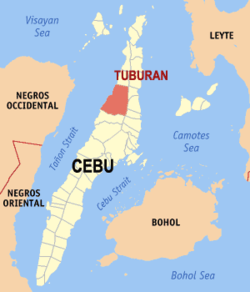 Map of Cebu with Tuburan highlighted | |
Location within the Philippines | |
| Coordinates: 10°44′N123°50′E / 10.73°N 123.83°E | |
| Country | Philippines |
| Region | Central Visayas |
| Province | Cebu |
| District | 3rd district |
| Founded | 1851 |
| Barangays | 54 (see Barangays) |
| Government | |
| • Type | Sangguniang Bayan |
| • Mayor | Democrito M. Diamante (IND) |
| • Vice Mayor | Danilo M. Diamante (IND) |
| • Representative | Pablo John F. Garcia |
| • Municipal Council | Members |
| • Electorate | 47,583 voters (2022) |
| Area | |
| • Total | 233.56 km2 (90.18 sq mi) |
| Elevation | 57 m (187 ft) |
| Highest elevation | 294 m (965 ft) |
| Lowest elevation | −1 m (−3 ft) |
| Population (2020 census) [3] | |
| • Total | 68,167 |
| • Density | 290/km2 (760/sq mi) |
| • Households | 17,312 |
| Economy | |
| • Income class | 2nd municipal income class |
| • Poverty incidence | 24.40 |
| • Revenue | ₱ 246.5 million (2020) |
| • Assets | ₱ 1,089 million (2020) |
| • Expenditure | ₱ 252.8 million (2020) |
| • Liabilities | ₱ 279.8 million (2020) |
| Service provider | |
| • Electricity | Cebu 2 Electric Cooperative (CEBECO 2) |
| Time zone | UTC+8 (PST) |
| ZIP code | 6043 |
| PSGC | |
| IDD : area code | +63 (0)32 |
| Native languages | Cebuano Tagalog |
| Website | www |
Tuburan, officially the Municipality of Tuburan (Cebuano : Lungsod sa Tuburan; Tagalog : Bayan ng Tuburan), is a 2nd class municipality in the province of Cebu, Philippines. According to the 2020 census, it has a population of 68,167 people. [3]
Contents
- History
- Foundation
- Philippine revolution
- Tuburan as Cebu's largest municipality
- Geography
- Barangays
- Climate
- Demographics
- Economy
- Tourism
- Transportation
- Education
- Elementary schools
- High schools
- References
- Sources
- External links
Tuburan was the hometown of the revolutionary leader Arcadio Maxilom. [5] And is also known for its crystal-clear springs, beaches, creeks, rivers, caves and natural attractions.
Industrial and domestic products include decorative apparel and fashion accessories made of seashells and coconut shells, wood and other indigenous products. Tubod Festival is held every 13th of June in honor of the parish patron, Saint Anthony of Padua. [6]




